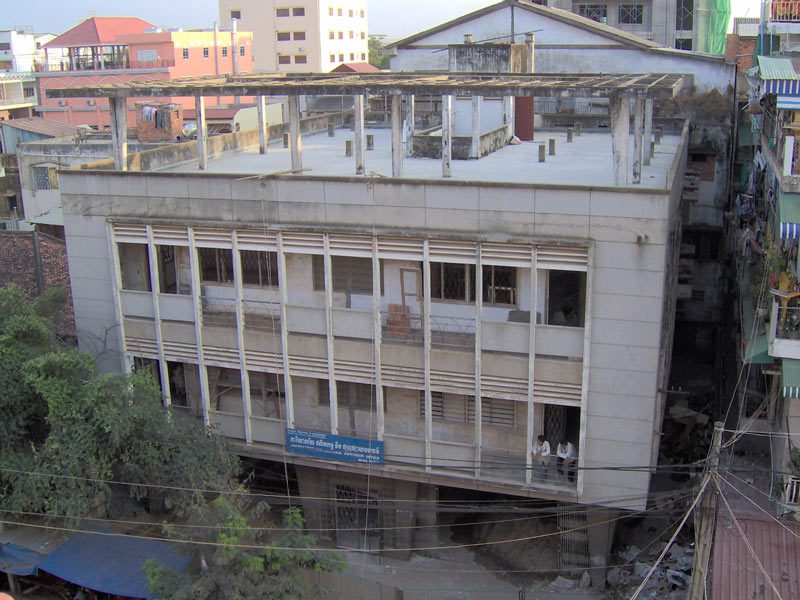On 28 November, 2018, William A. “Bill” Heidt ends his role as US Ambassador. Problems in Washington leave the role vacant for over 9 months..
On November 29, 1961, the following memo was sent from the Secretary of Defense’s Assistant for Special Operations (Lansdale) to the Director for Intelligence, Joint Staff (Collins), discussing the frustrations being felt about communism in Cambodia:
Washington, November 29, 1961.
Noting that the rather scholarly report (DAIN 176482) on Cambodia from Chief, MAAG (*Military Assistance Advisory Group), Phnom Penh, to CINCPAC,1 had JCS as an info addressee, and knowing JCS’s concern over problems in Southeast Asia, I thought some informal comment might be helpful.
The MAAG message states that MAAG and other U.S. organizations in Cambodia have investigated reports of Viet Cong bases and training areas in Cambodia. It concludes: “We have found none. We believe there are none.” In this, MAAG apparently has come to the same conclusion as did Trumbull of the New York Times, who wrote on this point recently.
What is disturbing is that we used to get similar reports from Laos. There was a time, not long ago, when nobody could find a Pathet Lao in the country and it became rather popular around town to poo-poo the idea that there were any Communist guerrillas in Laos. Now we get a similar poo-pooing from Cambodia.
I wonder if these folks who go looking really know what a Communist guerrilla looks like? In Cambodia, I feel certain that he looks, talks, and claims to be just like the other folks on rubber plantations, in villages, and in the rice paddies. In Cambodia, the provincial governors have received “economic aid” in the form of gold payments from Chinese Communists and it is doubtful that such “neutralists” could find a single Communist in their provinces if asked by well-meaning Americans. Most of the French, including the Deuxieme Bureau types, probably think it a good joke on us and keep the joke going.
Wouldn’t it be a good thing for the Chief of MAAG–Vietnam, who has access to Viet Cong prisoners, to provide some clues to Chief of MAAG–Cambodia? It might be okay for American civilians to be lulled into a real lotus-land picture, but our military need to look at the scene with hard realism.
On November 30, 1992, the UN Security Council imposed economic sanctions (oil and trade embargo) against Khmer Rouge-controlled parts of Cambodia.
On November 30, 1998, Hun Sen formed a coalition government as prime minister. Norodom Ranariddh was elected president of the National Assembly.
On December 1, 1965, a US Intelligence memo wrote: In the past week, Peking has agreed to supply small arms (*to Cambodia) for an additional 10,000 men as well as some antiaircraft weapons and 11 obsolescent planes, including a few jet fighters. The full memo can be read HERE
On December 1, 1971, FANK and Khmer Krom battalions, crushed by a Vietnamese and Khmer Communist counter-attack against Operation Chenla II offensive, causing the disorganized Cambodian troops to abandon several key positions. The operation was terminated two days later and was the last major offensive undertaken by the Khmer Republic.
On December 2, 1978, the official founding of the Salvation Front (FUNSK) in what Khmer socialist militants called a “Reunion Congress”. The aim of the FUNSK was to expand as a Cambodian front in order to overthrow Pol Pot’s regime of terror. The Salvation Front drew eleven points for the reconstruction of the country. These points would be used after the establishment of the PRK to motivate Cambodians to support the rebuilding efforts and the pro-Soviet structure of the new state to keep the revolution alive with a moderate, pragmatic and humane approach compared to the Khmer Rouge. Although the front was largely controlled by KPRP communists, it included quite a few non-communists in its leadership, such as Cambodian Buddhist religious figures, as well as women.

On 2 December 1987, the first meeting between Prime Minister Hun Sen and Norodom Sihanouk at Fère-en-Tardenois in France, and jointly signed a joint communique, paving the way for further peace talks.
On December 2, 1981, Secretary-General Pen Sovann was arrested for irritating Lê Đức Thọ, chief Vietnamese advisor to the Kampuchean United Front for National Salvation (FUNSK) and the People’s Republic of Kampuchea (PRK). He was released from Vietnam’s prison on 25 January 1992, after he served over 10 years.
On December 4, 2006, the Bophana Audiovisual Resource Center is opened by filmmaker Panh Rithy and director Ieu Pannakar. By naming the center after Bophana, a young female prisoner under the Khmer Rouge, the founders want to pass on the message of struggle, courage and dignity that she left to posterity through her letters and life story.

